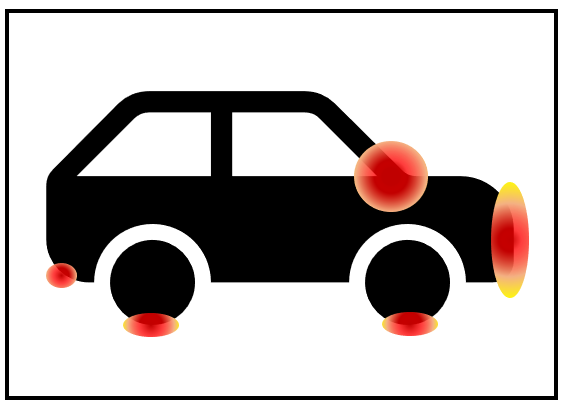Acoustic Imaging is a solution to visualize the location of sound sources. The main application is noise source localization. In noise source localization, an acoustic heat map is overlayed a visual image to indicate to the user the location of the noise source.
Acoustic Imaging for noise source localization for the following applications:
- Detection of gas leaks
- Finding of sources automotive engine noise
- Sound leaks in the cabins of automobiles, airplanes and trains
- Wind tunnel testing for automotive and aviation industries (i.e. finding locations of noise generating drag)
- Environmental Noise Studies, such as wind turbines, construction sites, high speed rails
Acoustic Imaging utilizes the technology of Microphone Array Beamforming. In baseline systems, the beamforming algorithm scans a 2D space, and the strength of the output power of the beamformer provides location information on a sound source. When a beamformer is steered in a direction of a sound source, the microphone array signals will add constructively increasing the power level of the output.
The main technical challenge of Acoustic Imaging is the ability to provide high resolution images across a wide variety of frequencies. The spatial resolution of the image is dependent on the frequency of the sound source, and the geometry of the array. Therefore, it is typical to deploy a non-uniform array with a high channel count to minimize the beamwidth and the presence of sidelobes. To make a great Acoustic Imaging solution one must also consider the beamforming algorithm design, the calibration of the microphone array, and sound propagation models.
